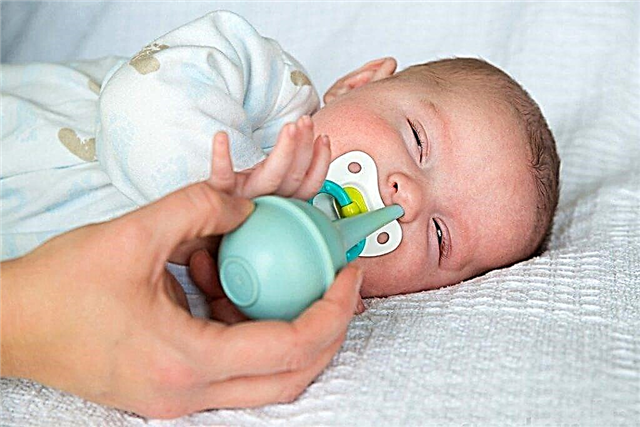The question of how to teach a child to sleep in his crib begins to bother parents about 6 months after a happy event. At first, many mothers put their newborns in their bed so as not to get up during night feeds.
The baby is gradually growing up, and the crib is still idle, because he is already accustomed to mother's warmth and is categorically against moving to a new place. Not only the child is nervous, but also the mother, the father is also unhappy.
If parents want to know how to teach a child to fall asleep on their own, then they should listen to the recommendations of pediatricians, psychologists and more experienced mothers who were able to survive the stage of accustoming a baby to a crib without any problems.
The advantages and disadvantages of sleeping together
Parents, when choosing who the child should sleep with, often decide in favor of sleeping together.

In addition, many advocates of natural parenting also advocate a strong baby-mom bond, especially during the newborn period. But such a habit also has disadvantages.
Pros
- a 1 month old infant constantly wakes up at night to get enough breast milk. It is not easy for a woman to get up every time, lift the baby out of bed, breastfeed and put him back;
- the largest volume of prolactin (the hormonal substance responsible for milk production) begins to be produced precisely at night. Lack of sleep, resulting from the constant motion sickness of the crumbs at night, negatively affects the volume and quality of the chest secretion;
- bodily contact between mother and newborn allows biological rhythms to be combined. Therefore, when falling asleep together, the mother and the baby rest together: after latching on to the breast, the child quietly sleeps, therefore, the parent also falls asleep.
Minuses
- a child at 4 months only seems small, but on the parent's bed, he can take up quite a lot of space. The father finds himself in such a situation "the third odd man", so he is forced to move to the sofa. Naturally, this has a negative effect on the intimate side of the life of the spouses;
- if a child at 2 years old does not want to sleep in his bed, then it is extremely difficult to accustom him to a personal sleeping place. In addition, there is often a "split" of the family on this issue, when the father seeks to send the baby to a separate bed, and the mother, pitying her beloved little one, wants to delay the moment of "separation";
- baby hygiene is more serious, so any infection can increase its effects in a closed bed environment. In addition, if the dad smokes, the baby may even have allergic reactions to nicotine;
- very rarely, but still tragedies happen when a tired mother crushes the baby who is sleeping at her side. Of course, such situations are rare, but you should not forget about them and you should not go to bed tired with your child either.
Sharing sleep can help out in such a situation when adults feel a lack of communication with babies throughout the day. For example, when the mother goes to work literally 4 months after the birth of the baby and leaves during the day.
From the point of view of psychologists, children who slept in their parents' bed in infancy are more dependent on mom and dad. However, strong attachment is noted at an early age, then, if there is no excessive care in upbringing, relations will normalize.
When to teach a child to fall asleep in his crib?
 The question of how to accustom a newborn to a crib almost never arises from parents, because if the child is put to sleep in his own sleeping place from the first days of life, then problems with weaning simply will not arise.
The question of how to accustom a newborn to a crib almost never arises from parents, because if the child is put to sleep in his own sleeping place from the first days of life, then problems with weaning simply will not arise.
If the child has fallen asleep with his parents or mother since birth, weaning will be delayed. That is why it is necessary to choose the age that is most favorable from a psychological and physiological point of view.
Many experts recommend thinking about the question of how to teach a child to fall asleep in his bed, at about 6-8 months of age.
During this period, the number of night feedings is significantly reduced, the baby can sleep all night without waking up. Also, at 6 months, the child turns over without the risk of suffocation and this process does not need special control.
However, this age period is only a recommended period, since it is imperative to look at the characteristics of the baby. Will be it is easier to teach a child to sleep in a crib if:
- the baby is able to sleep soundly at night (the number of night awakenings is 1 - 2 times);
- natural feeding has either already been stopped, or the mother is breastfeeding the baby three times a day;
- the baby does not cry or scream if he does not see mom and dad when he wakes up;
- he is able to remain alone for a quarter of an hour;
- he seeks to push himself away from his parents during sleep;
- the baby was born full-term, does not suffer from chronic diseases;
- weaning from the parental bed does not coincide with stressful moments (learning potty etiquette, the birth of a brother / sister, entering the kindergarten, weaning).
Solving the problem of how to teach a child to sleep separately does not involve removing bodily contact with the mother, but demonstrating the benefits of independent sleep.
Choosing the right bed as a solution to the problem
If the child does not want to sleep in the crib, the problem may be in his separate sleeping place. In such a situation, you should purchase a special side bed.

This type of furniture is an ordinary cradle, but it lacks one side. Thus, the crib flows smoothly into the parent's bed and vice versa.
With the help of special fasteners, the sleeping place for the child is installed on the same level with the adult bed. The kid, as it were, falls asleep separately, but is next to his mother.
A mother can breastfeed her baby at any time, without even having to get out of bed. Once full, the child quickly closes its eyes, feeling the warmth of the mother's body. Mum's affectionate touch will also help to calm down.
When the baby grows up a little (for example, at 2 or 3 months), a small side is created in his bed from a diaper for some separation from the mother. After another 4 weeks, the wooden board returns to its place, usually during this time the child has time to get used to the sleeping place.
After a while, the bed is gradually moved away from the parent bed. This sequence allows you to avoid violent reactions from the child and prepare the mother psychologically for "parting" with her child.
How to accustom a child to his crib?
Of course, first of all, you must pay attention to the needs and desires of the baby. However, the interests of adults should not be forgotten either. So, the popular TV doctor Komarovsky is convinced that you should not sacrifice yourself to babies.
This means that you need to act decisively and take into account the interests of each household. After all, if mom or dad do not get enough sleep or wake up broken, no one will be better from this.
Transferring a child to a separate crib requires a consistent, patient approach and consideration of the child's age. Of course, the methods chosen will be different at 3 months or 3 years.
Infant age
As already noted, the most favorable period for weaning a baby from the parental bed is the age of six months, plus or minus a few weeks.
 In infancy, the baby tends to break with habits faster. What can be done in this case:
In infancy, the baby tends to break with habits faster. What can be done in this case:
- experienced mothers are advised to closely monitor children's reactions. In order for the baby to fall asleep faster, you need to put him in the crib not according to the established schedule, but at the first signs of fatigue. Otherwise, an active child will start spinning in the cradle, reading for pens;
- you can influence the subconscious, creating a connection in the infant between a certain action and falling asleep. A baby already at 4 or 5 months is able to "trace" the connection between bathing, relaxing massage and going to bed. A lullaby before bedtime can also be a good ritual;
- a baby bed is a place designed exclusively for falling asleep. You need to feed, play with the baby in completely different corners;
- if the baby falls asleep immediately after feeding, put a diaper under the baby. After a quarter of an hour (when the baby is deeply asleep), you need to move the baby to bed. In addition, a soft diaper will retain the maternal scent, which will contribute to sound sleep;
- how to teach a newborn to sleep separately? Usually there are no problems with such a small baby. But for a good sleep, you can create the conditions for the baby to which he is accustomed in the mother's womb. Experienced mothers advise swaddling a baby up to 4 - 8 weeks, then this method already stops working.
If a child sleeps with his parents until about 9 months, then he learns to constantly contact with them. Therefore, touch is extremely important for him.
In order to wean a one-year-old child from sleeping with mom and dad as painlessly as possible, you need to try to compensate for the number of touches and tactile proximity throughout the day.
This will allow the baby to feel surrounded by tenderness and love. But psychologists advise against taking it on handles. It is better to just stroke, kiss, showing affection with the help of touch.
Children over 2 years old
If the parents did not manage to accustom the child to their own bed at 6 or 9 months, it cannot be said unequivocally that the good time has already been lost, and the baby will no longer get used to the new sleeping place.
However, the fact that two- or three-year-old children sleep in their parents' bed should not be considered the norm either. Marital relations are also affected. Here some tips:
- first advice: if the child does not sleep in the crib, you should gradually get used to the new sleeping place. Use the hint above - use an attached baby bed. The baby will be nearby, but separate from the parents. Then the bed is removed from the parent bed;
- it will be easier to accustom the child to the crib if you offer him to buy furniture himself. The shops have models in the form of a car, a magic palace, an airplane, a ship;
- you need to buy related accessories for the purchased bed: a blanket, a sheet, a soft pillow, new pajamas. If the kid is wary of the darkness in the nursery, get a night light;
- peers will help to teach the baby to sleep, there is already a separate corner for sleeping. Make a visit so your child can see how other children are respectful and proud of their personal crib;
- the baby is more likely to get used to his crib if he sleeps in it during the day. When laying, you need to close the curtains, create a pleasant psychological atmosphere, for example, read a fairy tale or give the baby a massage. For sleep to come sooner, be sure to take a walk, let the child run around and get a little tired;
- when the baby gets used to it, you can already switch to a night's sleep in the crib. Turn on a night lamp to eliminate various fears, read fairy tales. During the day, you need to work with the child so that by dinner he already feels pleasant fatigue. However, make sure that children do not overwork.
It may sound a little strange, but above all, the mother should want to sleep separately. During a joint stay in the same bed, a woman could get used to this position, and now, on a subconscious level, she does not want to part with her child.
We prevent possible errors
So, we found out that mother's anxiety and psychological resistance are transmitted to children, as a result of which the child does not want to sleep in a separate bed or simply cannot sleep.

In order not to spoil the process of accustoming to a separate sleeping place, you need to avoid other common mistakes. For instance, it is impossible:
- intimidate children;
- refuse to turn on the night light;
- act in disagreement with your spouse. It is important to agree in advance with your husband about uniform requirements for the child;
- screaming, using punishment if the child refuses to sleep in the crib;
- transferring a two- or three-year-old baby from the parent's bed to the baby's cradle, especially if it is in another room (this age period is the time when fears appear);
- teasing, calling names, laughing at childhood fears or unwillingness to sleep separately;
- discuss the current situation with other people, even if close ones, in the presence of the child;
- leave the baby crying in bed for a long time when he wakes up and does not see his mother (you should also not immediately run to another room at the first squeak);
- allow the baby to stay in the parent's bed. A trained child can try with the help of various tricks to sleep with mom and dad, manipulating their feelings (the exception is if the baby is sick).
If a replenishment is expected in the family soon, it is necessary to move the older child to a separate bed even before the younger family member is born.
Otherwise, it will seem to the first-born that the change of the place of spending the night is connected with the birth of a brother / sister, as a result of which protest reactions and constant bouts of jealousy may occur.
As a conclusion
If the question of how to teach your child to sleep separately from their parents seems too difficult for you, you can seek expert advice from a pediatrician or psychologist.
In a generalized form, the recommendations of experts look like in the following way:
- It will be easier for a child to fall asleep alone if bed habituation takes place at the optimal age period - from six to eight months;
- the younger the toddler, the easier it is to adapt to the conditions of falling asleep. Newborn babies usually (but not always) sleep peacefully and without a mother;
- The best way to teach is a side bed, which allows you to be close to the child and at the same time maintain some distance;
- you should not delay moving to a personal baby bed until 2 - 3 years old. At such an "adult" age, the addiction process will be seriously delayed and become more painful;
- you cannot punish, scold the child, otherwise he will perceive falling asleep separately as a disciplinary measure, which is not very good for parent-child relationships;
- it is important to bring the issue of children's sleep to a common denominator by discussing all the rules with other household members. The process of accustoming to a bed can be delayed if the grandmother puts the baby under her barrel.
As you know, every change in a child's life is not easy. However, if you follow all the important rules and conditions, then very soon the baby will enjoy sleeping in his own bed, and you will enjoy peace and tranquility, as well as full-fledged marital relations.



